Last Updated on November 2, 2025 by Owen McGab Enaohwo

Picture this: your rapidly growing technology startup has quickly expanded its workforce to keep pace with industry demands. However, as the company scales, there’s a challenge in onboarding new employees to ensure a smooth transfer of institutional knowledge.
With each new hire, your team encounters difficulties maintaining consistency in training and disseminating organizational culture. Despite hiring new people, most of your team members still rely on the longest-serving employees to get information about how to do their tasks.
Such issues arise because of the absence of a structured approach to knowledge management in the onboarding process, which hampers the seamless integration of new team members. The solution lies in adopting the proper knowledge management systems. In this article, we’ll explore what knowledge management is, its benefits, tools, use cases, and best practices.
Say goodbye to scattered information and hello to streamlined processes. Sign up for our 14-day trial of SweetProcess and transform your knowledge management systems. No credit card is required!
Table of Contents
What Does Knowledge Management Really Mean?
Why Is Knowledge Management Important?
What Are the Major Types of Knowledge?
Knowledge Management Process: 7 Steps to Bridge the Knowledge Gaps in Your Organization
How to Manage Your Company’s Knowledge Using SweetProcess
Top Knowledge Management Tools
Knowledge Management Use Cases: How to Use It to Grow Your Company
Knowledge Management Best Practices You Should Live By
Knowledge Management Challenges You May Encounter in Your Organization
Build and Manage Your Company’s Knowledge Using SweetProcess
What Does Knowledge Management Really Mean?

Knowledge management is the systematic process of identifying, capturing, organizing, and utilizing an organization’s intellectual assets to enhance its performance and achieve its objectives. Think of knowledge as the lifeblood of an organization, including data and information, expertise, and insights embedded within its people and processes.
Therefore, in a company setting, this involves gathering resources like training documents, frequently asked questions, and other technical resources and managing them in one location that all employees can access.
For instance, an engineer who successfully addressed a complex coding issue could document the solution in this virtual workspace. When another team member encounters a similar challenge on a different project, they can refer to this shared internal knowledge base.
Such knowledge management practices save time, avoid duplicate efforts, and foster a culture of continuous learning and improvement. Efficient knowledge management is the connective tissue that preserves existing knowledge and boosts collaboration.
Why Is Knowledge Management Important?

Does your business have a knowledge management system? Every company should have a proper plan to share and use information. This approach empowers employees to execute their tasks and improve the existing processes.
Here are the reasons why knowledge management is important:
Preserves Experiential Knowledge
Each organization has employees who have been working there for years. During this time, the employees gain tribal knowledge, which is sometimes undocumented and unshared to the rest of the team. Therefore, when such employees leave, all the information gets lost.
However, if your company has knowledge management systems, you can safeguard an organization’s wealth of experiential knowledge. You can capture insights, lessons learned, and best practices to ensure the invaluable experiences of employees are preserved.
This prevents the loss of relevant knowledge due to turnover and facilitates the efficient transfer of expertise across generations.
Improves Customer Satisfaction
Knowledge management enhances customer satisfaction. When you equip your customer support teams with a centralized repository of information, you can provide quicker, more accurate responses to inquiries.
For instance, a customer support team with a knowledge management platform consolidates product FAQs, known issues, and troubleshooting guides. When a customer reaches out with a query, the support team can quickly access and apply this collective knowledge, providing prompt and accurate assistance and enhancing customer satisfaction.
Reduces Duplicate Effort
Well-documented knowledge ensures that all the information and best practices are easily accessible. Teams from different departments have a reference point, which saves time and encourages a more streamlined and efficient workflow.
Additionally, they can learn from each other’s experiences, preventing the unnecessary repetition of tasks. In case there was a similar issue in the past, your employees can check the documentation to get a solution and use their time for new challenges and innovations.
Answers Repeated Questions
If you are in the HR department, you require a training manual for new and existing employees. Additionally, you have to maintain an internal knowledge base that addresses common employee queries about policies, benefits, and procedures.
Employees can self-serve by accessing this repository, reducing the number of repetitive inquiries. Develop an employee training and development guide to empower employees to find answers swiftly. This approach boosts individual productivity and reduces the burden on support and expert teams.
Seamless Access to Information
Another advantage to knowledge management is the creation of a centralized hub for information. If you’ve been struggling with collaboration and disorganization due to a lack of information, you need a knowledge base that holds all company insights.
Your team should be able to retrieve accurate and up-to-date information whether they are working remotely or on-site. In return, they can perform their tasks more effectively.
Supports Continuous Learning
Statistics show that excellent employee training and onboarding processes can enhance retention by 82%. A knowledge management system is useful for such training activities because it boosts continuous learning and improvement.
For instance, an engineering team can regularly conduct knowledge-sharing sessions where team members showcase innovative solutions, lessons learned from recent projects, and emerging industry trends.
These sessions can be recorded and stored in a learning management system. This creates an ongoing learning resource for all team members, fostering a culture of continuous improvement.
Enhances Compliance With Regulation and Industry Standards
In regulated industries, it’s important to comply with set standards. Knowledge management assists organizations in systematically organizing and updating policies, procedures, and best practices so that they align with regulatory requirements.
This proactive approach mitigates risks and positions the organization as a leader in ethical and compliant practices.
What Are the Major Types of Knowledge?

To create an efficient and effective knowledge management system, you should understand the different types of knowledge. Here are the three types of knowledge you need to know.
Tacit Knowledge
This is the internalized knowledge, personal insights, and expertise that individuals acquire from personal experiences. This information is usually specific to a particular thing. Most people who possess this knowledge may find it challenging to articulate.
Examples of tacit knowledge include the expertise a veteran employee has developed over years of practice. For instance, a customer service representative with tacit knowledge knows the exact words to calm a particular customer when other team members are unable to.
Most employees need explicit and implicit knowledge to acquire tacit knowledge. To manage this information, you can use mentorship programs and collaborative work environments to facilitate informal knowledge capture and exchange.
Implicit Knowledge
Some jobs require you to have practical skills to work effectively. Implicit knowledge combines practical skills, know-how, and procedural knowledge that individuals know. While tacit knowledge comes from experiences, implicit knowledge is embedded in routines and tasks.
For instance, if you have training sessions for your employees in a restaurant, they have to practically execute their culinary techniques to understand the steps in a recipe. Implicit knowledge is often shared through observation and hands-on experience. To implement this, you should:
- Capture and document the restaurant SOP
- Create training programs
- Facilitate collaborative work environments where skills are actively demonstrated and practiced.
Explicit Knowledge
Explicit knowledge is the most tangible and easily transferable type of knowledge. This is because it includes information that can be documented or written down.
Examples of explicit knowledge include:
- Manuals
- Databases
- Documents
- Written procedures
To manage this information, you can create databases, FAQs, and reports that are readily accessible. This knowledge asset is crucial for standardizing processes and facilitating structured learning within an organization.
Knowledge Management Process: 7 Steps to Bridge the Knowledge Gaps in Your Organization

How can you develop a knowledge management solution? This section will provide seven steps you can integrate into the knowledge management process.
Step 1: Knowledge Gathering
This is the first step in knowledge management. The process involves systematically gathering information and insights from various sources within the organization.
You can use surveys, interviews, and data analysis to identify and capture both tacit and explicit knowledge. This approach allows you to tap into the experiences of seasoned employees, understand best practices, and document unique expertise held within the workforce. This initial data collection exercise allows you to identify knowledge gaps from the onset.
Step 2: Knowledge Creation
Once you’ve gathered the existing data, it’s time to involve the rest of the team. Knowledge creation is when your team members and stakeholders add what they have learned to your database. To formulate this knowledge, you can organize:
- Brainstorming sessions
- Problem-solving workshops
- Strategic planning sessions
Use the data gathered to create a knowledge base for all employees.
Step 3: Knowledge Organization
Every company has its own organizational strategies. You can categorize the information into departments, topics, or themes.
Organizations establish logical structures that align with their objectives. This deliberate organization ensures that relevant information can be swiftly located when needed. For instance, if the company information is stored in a sales database, all the employees in this department can get information directly from this folder.
Step 4: Knowledge Storage
For your company knowledge and information to be accessible for years to come, you should store it securely. Invest in dedicated databases and comprehensive knowledge management platforms to safeguard knowledge against loss.
Select the right storage infrastructure depending on your information types and the organization’s evolving needs. When you have a readily accessible archive, your team members can tap into a wealth of expertise whenever required.
Step 5: Knowledge Application
Your teams then need to actively integrate the knowledge into their day-to-day operations and decision-making processes. They can access the knowledge base and get information to help address challenges more effectively and make informed decisions.
The ultimate goal of knowledge application is to ensure that the wealth of information gathered is not merely a passive asset but a catalyst for improving processes.
Step 6: Knowledge Transfer
Knowledge transfer ensures that insights, expertise, and best practices are shared across teams, promoting a culture of collaboration. This includes organizing mentorship programs, training sessions, and collaborative platforms where experienced individuals share their insights with colleagues.
This step facilitates the exchange of valuable knowledge. Therefore, by the time the expert employees leave, they will have empowered newer team members to ensure that the organization continues to function seamlessly.
Step 7: Knowledge Optimization
Your knowledge base should always be updated. Therefore, you need to continuously evaluate and refine the entire knowledge ecosystem to ensure it remains relevant, efficient, and aligned with organizational objectives. Conduct regular assessments to gauge the effectiveness of knowledge management strategies and application processes.
How to Manage Your Company’s Knowledge Using SweetProcess
SweetProcess is a cloud-based software that documents procedures, policies, and processes in one place so that you can focus on growing your business. It’s an ideal knowledge management system because it transforms your existing policies and procedures into a public or private knowledge base for your clients and employees.
Additionally, SweetProcess is easy to use and understand and integrates with over 1,000 applications. Therefore, you can incorporate it with existing learning platforms.
Here’s how to use SweetProcess
How to Create Procedures Using SweetProcess
- Sign in to your SweetProcess account.
- Click the “Procedure” button.

- Select “Create Procedure.”
- On the next tab, add a procedure title.

- Include procedure details such as images and tables.
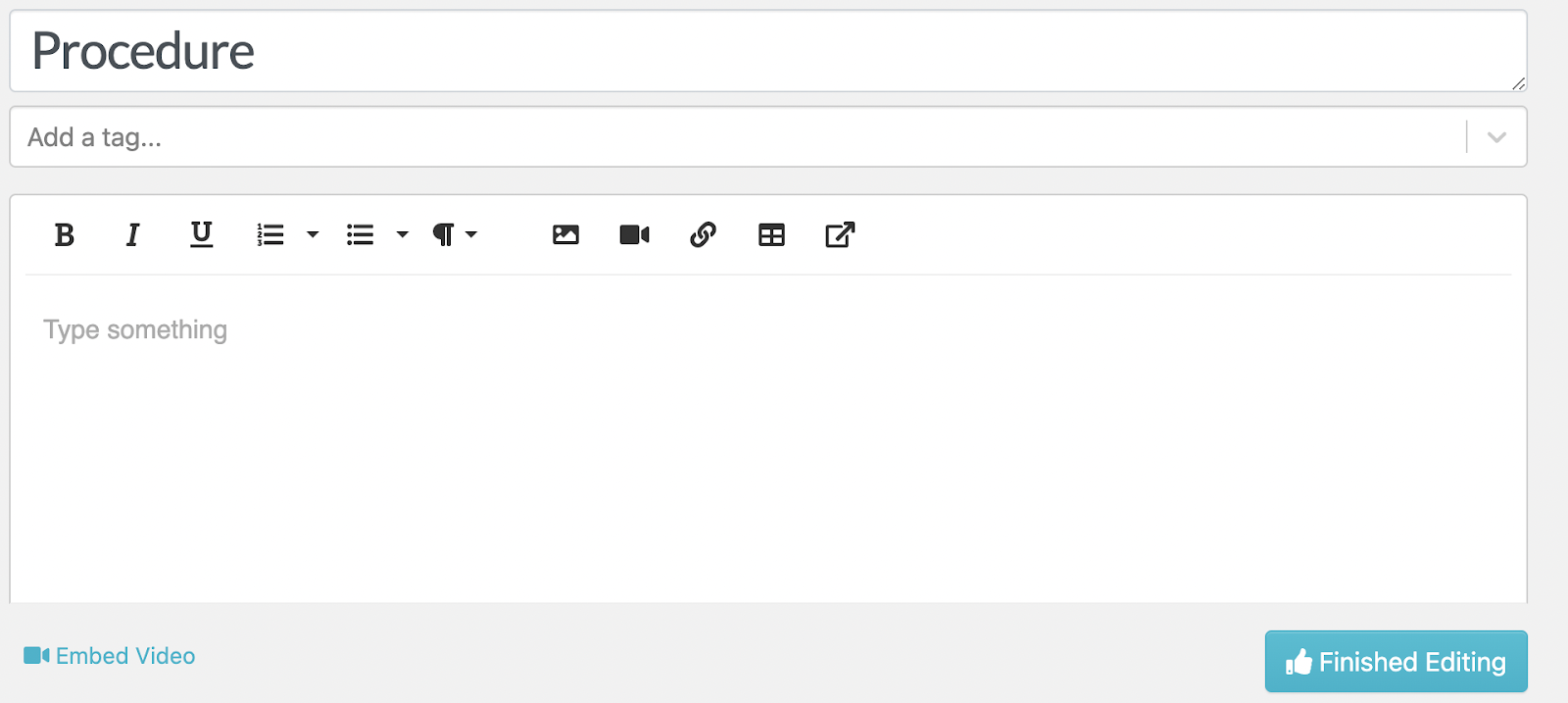
- Assign the procedure to specific teams.

To create a knowledge base much faster, you can create a procedure automatically using SweetAI. Follow the steps above. However, after adding the title, select the option to write with AI. The procedure will be generated in minutes.
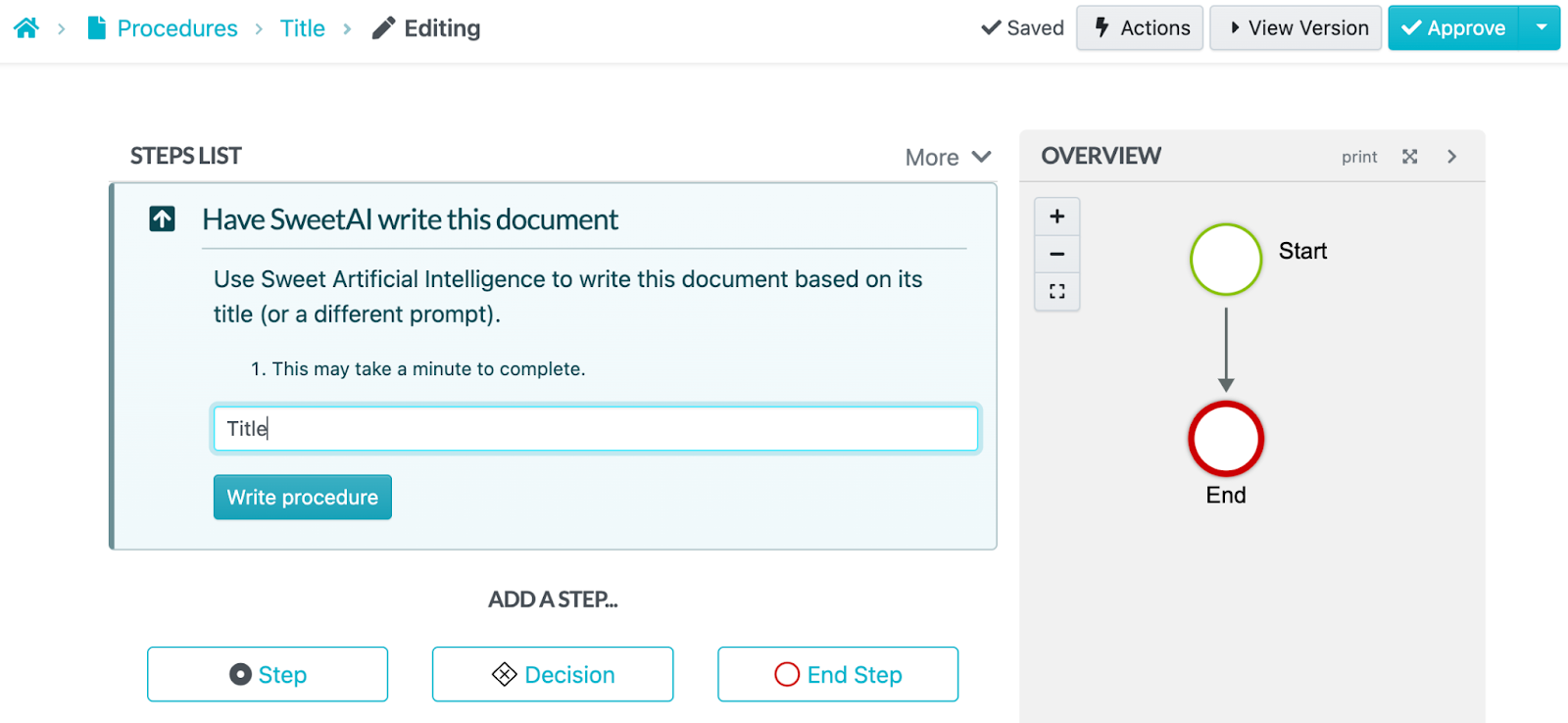
How to Create Procedures From Existing Processes on SweetProcess
Once you log in to your account,

Tap the “Add new Procedure” button to add a new procedure to the process. Add the procedure on the new tab.
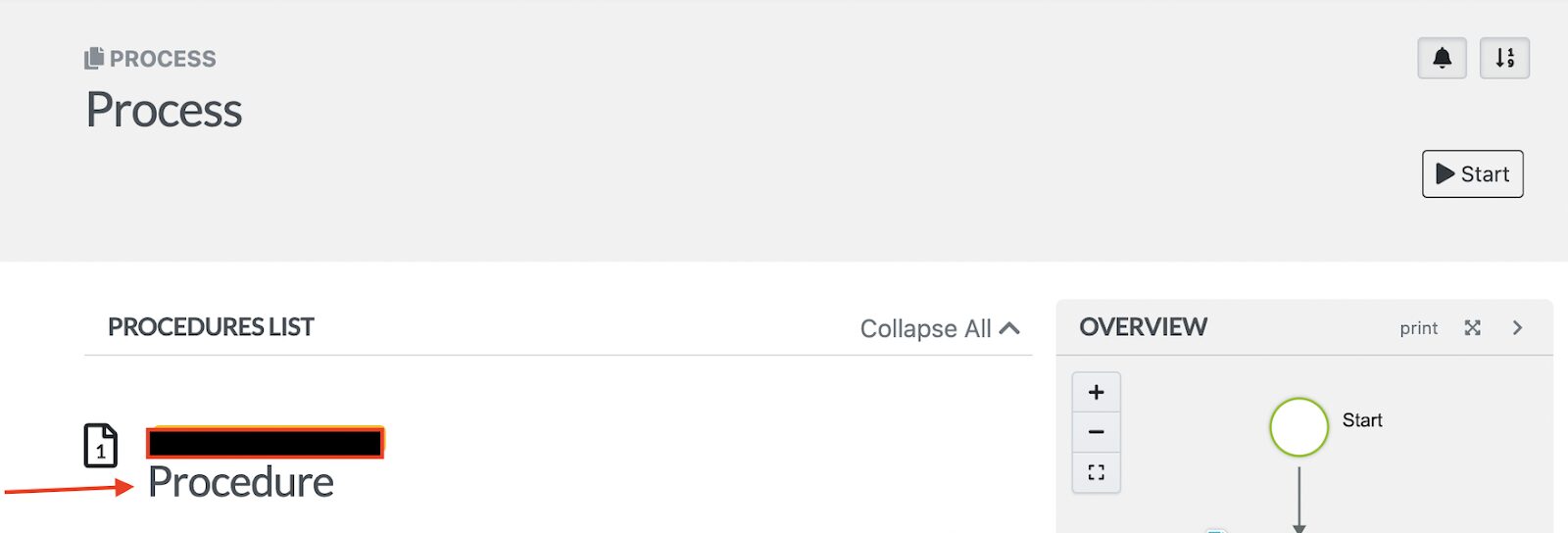
Add a procedure title and add it to the new process. Once you are done, click the “Save & View” button.
How to Create Company Policies Using SweetProcess
With SweetProcess, you can create a policy manually or using AI. Follow these steps:
- Log in to your SweetProcess account.
- Select the “More” button.
- Tap “Policies.”

- Select “Create Policy” on the next page.

- Add a policy title and assign it to teams by ticking one of the boxes.
- Select “Continue” after adding all the details.
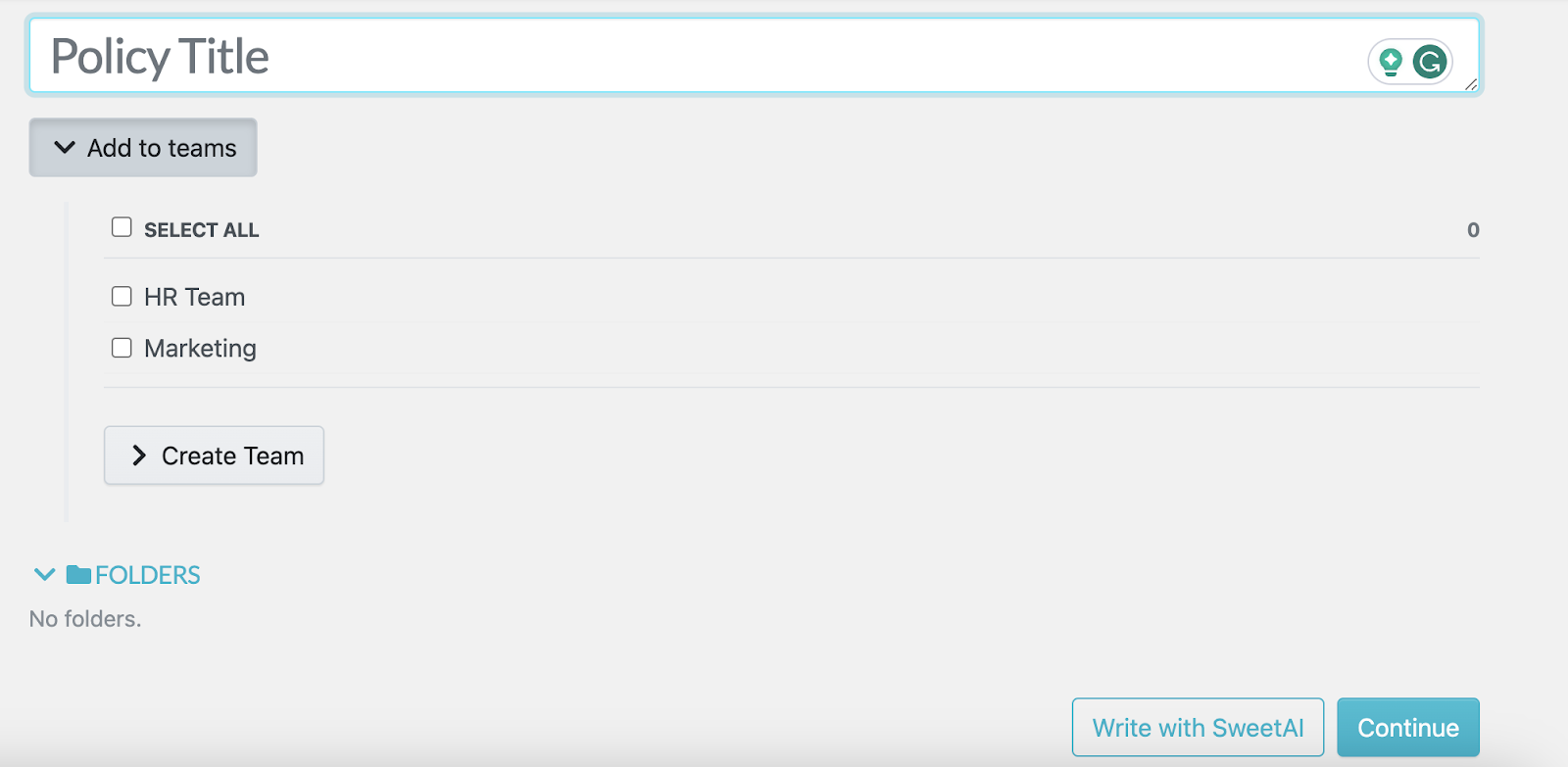
- Draft your policy and add the tags on the next page.

- Save the changes.
Once done, you can add approval permissions to ensure the right stakeholders access the policy.
How to Build Your Company’s Internal and External Knowledge Base Using SweetProcess
To build a knowledge management system effectively, you can use SweetProcess to build your database. Here’s how to go about it:
- Open your SweetProcess account.
- Select the “More” button on the main menu.
- Tap “Knowledge Bases.”
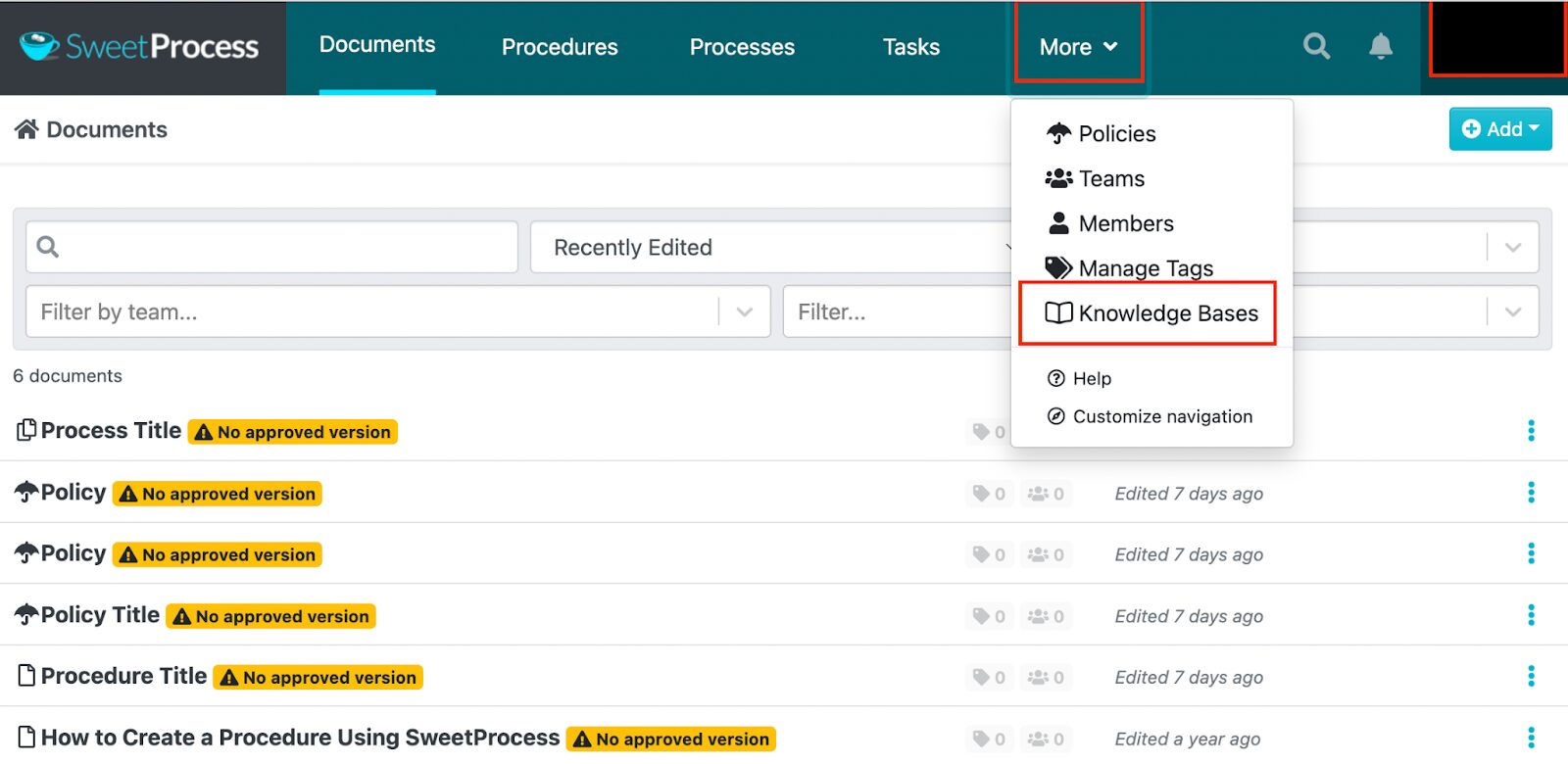
Include a title. If the knowledge base is external, you can add a public URL that links to the knowledge base.
You can edit the control access to make it available to the public.
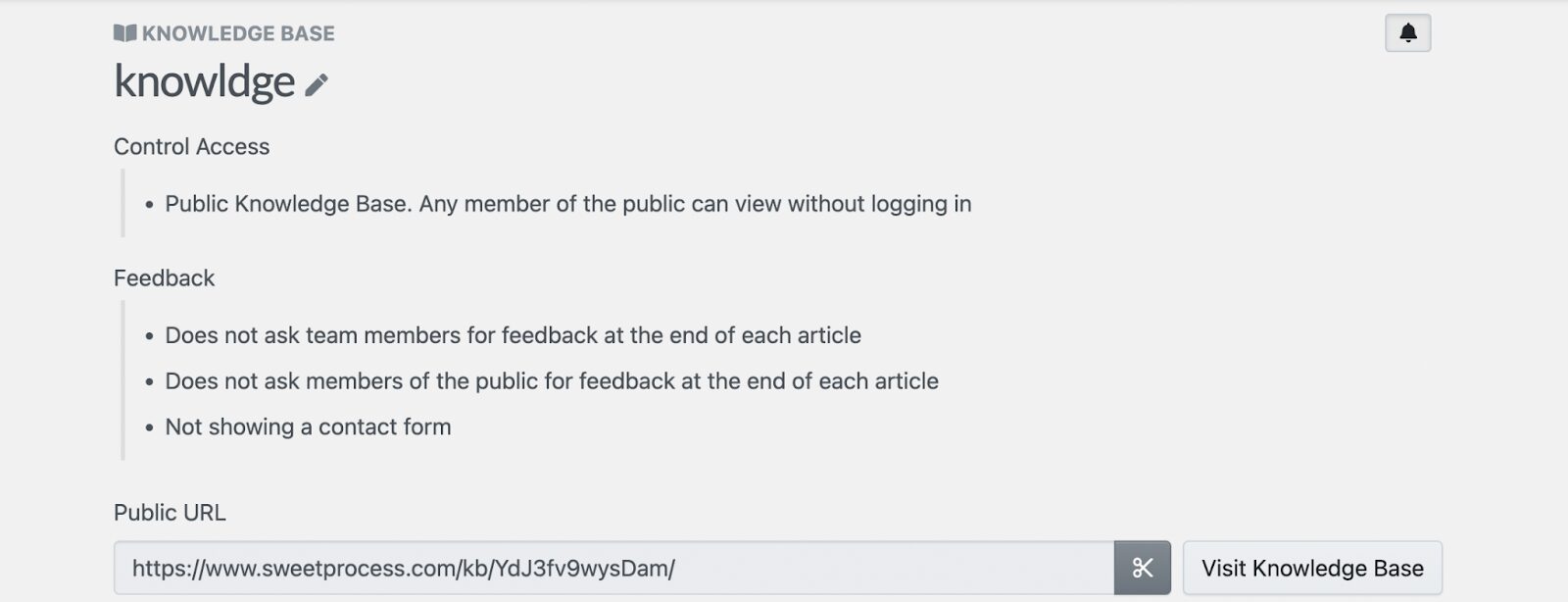
Here are some case studies of clients who have used SweetProcess to build a knowledge base.
One of them is Matthew Louridas, the director of operations and client services at Forest Incentives. As the go-to person for the company’s process-related issues, he faced challenges due to the lack of a proper documentation system. The Microsoft Word documents the company used were disorganized. Therefore, he had to look for a solid workflow system.
After several searches, the company discovered SweetProcess. Since then, the organization has automated documentation. The centralized knowledge base allows employees to find all the necessary information. Additionally, the team can now collaborate on tasks, which has been instrumental in streamlining the organization’s processes.
Another company that’s using SweetProcess is TechQuarters. The CEO, Chris Dunning, and operations director, Mark O’Dell, have been growing the business over the years. However, the fact that only the two of them had tribal knowledge was affecting the business. They figured they needed a centralized system to store all their business processes and procedures.
Mark started looking for the best knowledge management software on the market and settled on SweetProcess. He says, “It allowed us to bring different types of media and different bits and pieces into the system. It wasn’t just a simple checklist thing. It allowed us to nest inside it. This task needs to be done, and now you can build a down button, and here’s how to do it in a procedural way, which could then include further questioning or further information.”
After signing up for SweetProcess, the company had better documentation. They also had a centralized knowledge base; therefore, new and established employees could access any work instruction needed to be efficient at their jobs.
How to Manage Procedures, Processes, Policies, and Knowledge Bases on SweetProcess
SweetProcess makes managing procedures, policies, processes, and knowledge bases easy. All the company information is stored in one place; therefore, it’s accessible from the dashboard.
To make any changes or delete a particular process, policy, knowledge base, or procedure, use the search function at the top and choose what you need.
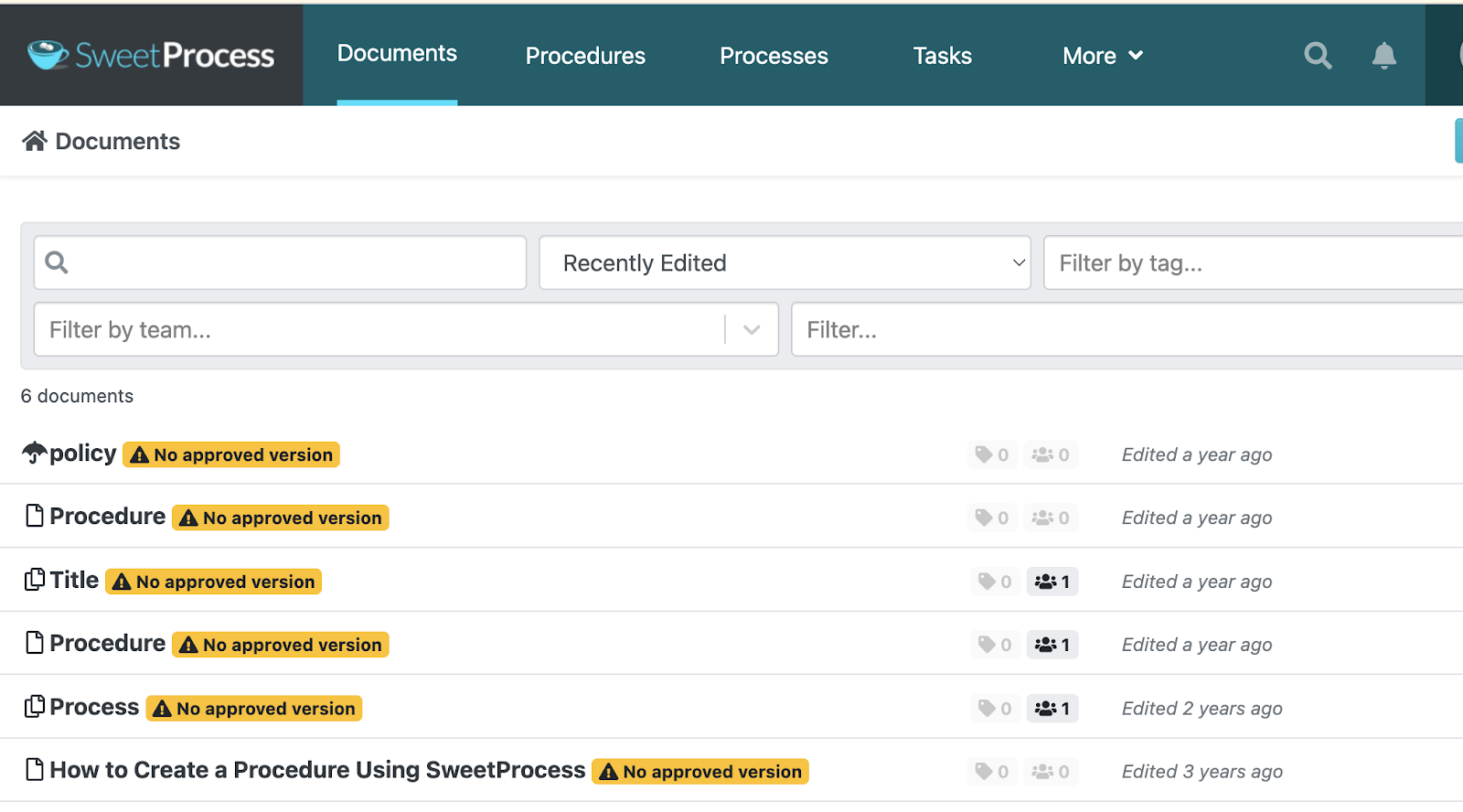
Seize the opportunity to centralize, organize, and optimize your knowledge assets. Start a free 14-day trial of SweetProcess.
Top Knowledge Management Tools

If you want to start building a knowledge management system, there are multiple tools you can use to share and analyze knowledge. Here are some good examples:
Knowledge Base Software
Whether you need a knowledge base for internal or external clients, consider incorporating the proper tools. The best knowledge base software holds all company information and knowledge, including employee manuals, SOPs, and onboarding templates. Your employees can refer to this platform regularly.
In addition, this tool holds the organization’s tribal knowledge to ensure that nothing is lost. With such software, you can streamline workflows, reduce queries, and promote employee collaboration. A good example is SweetProcess, which holds all procedures, processes, and policies in a single location.
Content Management System
Content management systems (CMS) software provides a centralized platform for creating, organizing, and distributing content within an organization. With these systems, you can edit and modify content online and share it with the rest of the team.
You also don’t need any coding expertise to use these platforms. Because they are easy to use, they facilitate collaboration and streamline document management in the entire organization. Some notable CMS tools include WordPress, SharePoint by Microsoft, and Drupal.
Before picking a tool, consider these features:
- User-friendliness
- Mobile-friendliness
- Customizability
Document Management System
Your business needs this software to capture, organize, and complete tasks using your business documents. Most of these tools have history-tracking features, making it easy for users to view if any changes have been made.
These systems automate documentation; therefore, your employees don’t have to spend a lot of time searching for information. For instance, if your company documents are stored on SweetProcess, your team members can search the dashboard to find a specific process or procedure.
Learning Management System
Learning and development is very important for an organization. To make the process efficient, you can choose learning management systems (LMS) that align with your business needs, learning objectives, and the desired level of customization. They help you deliver, manage, and track training and educational programs efficiently when implemented well.
An advantage of LMS tools is that they cater to diverse educational needs. They also offer features such as content creation, assessment tools, and analytics. Some good examples of such tools include SweetProcess, TalentLMS, and Trainual.
Wiki Software
Wiki software is pivotal for collaborative knowledge creation. It helps employees create and share content within the internet or an intranet. All team members can access, edit, and store knowledge.
Some of the documents you can find in wiki software include checklists, FAQs, training records, and company policies. You can consider tools like Notion, Confluence, DokuWiki, and MediaWiki.
Knowledge Management Use Cases: How to Use It to Grow Your Company

In today’s business world, many companies use knowledge management. Here are some of the ways to use it for your business.
Employee Onboarding
Data by Zippia shows that companies with a solid onboarding process improve employee productivity by over 70%. Therefore, you need to ensure your onboarding process is comprehensive, especially if you have new employees. A proper knowledge management system accelerates the integration of new team members.
It provides a structured approach to information sharing and skill development. With a centralized repository, you can share onboarding materials, training modules, and company policies to speed up the orientation process.
Furthermore, knowledge management facilitates mentorship programs by connecting experienced employees with newcomers for knowledge exchange. This expedites skill development and cultivates a collaborative atmosphere. Real-time updates and interactive platforms enhance engagement and will get your new hires up to speed from day one.
Customer Onboarding
You want to build long-lasting relationships with your customers. Knowledge management systems ensure that customers can access comprehensive product information, FAQs, and troubleshooting guides.
These materials enable the customer support team to address customer queries promptly, fostering a sense of reliability. A centralized knowledge base also empowers customers with self-service options, allowing them to navigate and understand products or services independently.
Your business will save money and time when onboarding customers because the processes are automated. When your clients are happy, they are more likely to use your services and products. In the long run, proper knowledge management can contribute to customer loyalty.
Team Communication
According to Forbes, as of 2023, 28.2% of full-time employees work a hybrid model, while 12.7% work from home. Therefore, if you have teams in different locations, you need a tool that makes it easy to communicate and share knowledge.
Knowledge management platforms provide centralized hubs for team communication, allowing members to access shared documents, project updates, and important announcements in real time. This enhances transparency and reduces the risk of miscommunication. Team members can use these tools to share insights, best practices, and relevant resources, creating a culture of continuous learning and improvement.
Furthermore, the discussions are archived; therefore, employees can refer to them anytime. Thanks to such features, your company avoids losing institutional knowledge during team transitions or changes.
Self-Serve Customer Service
Self-serve options deliver efficient and satisfying customer service experiences. Most knowledge management tools offer self-serve customer service so that they can address queries independently.
You’ll find resources such as:
- Accessible knowledge bases
- FAQs
- Troubleshooting guides
Once customers open the website, they can view these pages and get information or find solutions to common issues without direct assistance. This process expedites problem resolution and improves the customer experience because clients can get what they need faster.
Apart from improving customer satisfaction, self-serve options reduce the workload on support teams, enabling them to focus on more complex issues.
Product Enablement
Knowledge management platforms streamline product enablement by hosting centralized repositories of product documentation, tutorials, and best practices. If a customer wants to buy an item, they can check the information provided and utilize the product effectively.
You can also use these databases to support ongoing product education through regular updates. This way, users stay informed about new features and enhancements.
Knowledge Management Best Practices You Should Live By

Creating and managing a knowledge base takes effort and time. Whether you are developing a new one or improving the existing one, it’s important to start with the right foundation. Modern tools make it easier to generate a company knowledge base that centralizes information, reduces silos, and ensures employees have access to accurate, up-to-date content.
Here are the best practices to follow:
Analyze How Information Is Currently Shared
Before implementing any knowledge management strategy, you should thoroughly analyze how information is currently shared within your organization. This involves understanding existing communication channels, identifying bottlenecks, and evaluating the effectiveness of current knowledge-sharing practices.
You can conduct surveys and talk to the employees to get this information. Once you have this analysis, you can design a knowledge management system that addresses specific organizational needs and challenges.
Create a Knowledge Management Team
You need a team to develop a comprehensive knowledge base. To implement this successfully, establish a dedicated knowledge management team. This team is responsible for developing knowledge management strategies, overseeing the implementation of tools, and ensuring continuous improvement.
As you pick team members, ensure that the individuals have diverse skills, including information management, technology expertise, and a deep understanding of organizational processes. In addition, they should represent the entire organization from all departments.
Use the Right Tools
Which tools will work for your business? Take time to pick the tools that align with your organization’s unique needs and workflows. Your company may need document management systems, knowledge base software, collaboration platforms, LMS, or a combination of these.
As you choose a knowledge management tool, consider whether it integrates with existing software and has a user-friendly interface. This will make it easy for your employees to use.
Build a Culture of Knowledge Sharing
Knowledge sharing should not be a one-time thing. As a business owner, you should build a continuous learning process. To achieve this, encourage open communication, recognize and reward contributions, and create platforms for employees to share insights and best practices.
Ensure that the managers and supervisors create an opportunity for a collaborative and knowledge-sharing culture.
Increase Transparency Among Team Members
Transparency is crucial in effective knowledge management. Ensure that information is readily accessible to all team members and company departments. You should be transparent about organizational goals, project updates, and changes.
When you build such a culture, you empower your team members with the information they need to make informed decisions.
Reward Team Collaboration
When your team members use the knowledge base to collaborate, you should reward them. Establish proper mechanisms to acknowledge individuals or teams contributing significantly to knowledge creation and sharing.
This can be done through formal recognition programs, performance reviews, or other incentives that encourage a collaborative mindset. Your team will be more motivated to use the knowledge base.
Set an Optimization Calendar
Like other business sectors, knowledge management is an evolving process that requires regular evaluation and optimization. You should establish a calendar for periodic reviews of knowledge management practices, tools, and team workflows.
This strategy ensures that the system remains aligned with organizational goals and adapts to changing needs. Additionally, this optimization will facilitate continuous improvement and innovation.
Knowledge Management Challenges You May Encounter in Your Organization

As you create a knowledge management system for your business, you could encounter the following challenges:
Knowledge Hoarding
Knowledge hoarding occurs when individuals or teams withhold information for personal gain, job security, or other reasons. This can hinder collaboration and impede the flow of information essential for organizational success.
For example, if a team member possesses crucial insights and tribal knowledge for a project but intentionally keeps them to themselves, this affects collaboration. The other team members won’t have information about how to execute specific tasks.
Inability to Understand the Knowledge
Sometimes, the knowledge available may be complex or poorly documented. When this happens, your employees may find it challenging to comprehend and apply the information in their day-to-day work life. This can hinder the effective transfer of knowledge.
For instance, you might have a highly technical document written in a difficult language for non-experts to understand. In this case, the rest of the employees might not access and use it for the benefit of the organization. To address this, providing a clear Organizational Chart can help employees identify who to approach for clarification, making it easier to bridge knowledge gaps across different departments.
Loss of Knowledge
Knowledge loss occurs when experienced employees leave the organization or retire, taking valuable insights and expertise with them. This poses a significant risk, especially if no systematic knowledge transfer process is in place.
Therefore, if your organization relies heavily on a key employee about to retire, you need to have a proper knowledge transfer. Otherwise, the company will lose critical institutional knowledge.
Knowledge Decay
In rapidly evolving industries, knowledge can become outdated quickly. Failure to update and refresh your information regularly can lead to obsolete practices. For instance, some companies might have outdated information on their websites and other knowledge resources that don’t align with current technological trends. This can be detrimental to the company’s reputation and profitability.
Capturing Tacit Knowledge
Tacit knowledge, which is often experiential and based on personal insights, is challenging to formalize and document. When an employee with unique problem-solving skills and years of experience has to leave or retire, it can affect organizational knowledge, especially if these skills are not documented. Your employees won’t benefit from the expertise when needed.
Technology
While technology positively contributes to knowledge management, the wrong technology or inefficient implementation can become a challenge. Issues such as poor integration, lack of user adoption, or technological constraints can impede the success of knowledge management initiatives.
For instance, if you implement a new technology with a steep learning curve and complex interfaces, you may experience low adoption rates among employees, defeating the purpose of the technology.
Build and Manage Your Company’s Knowledge Using SweetProcess
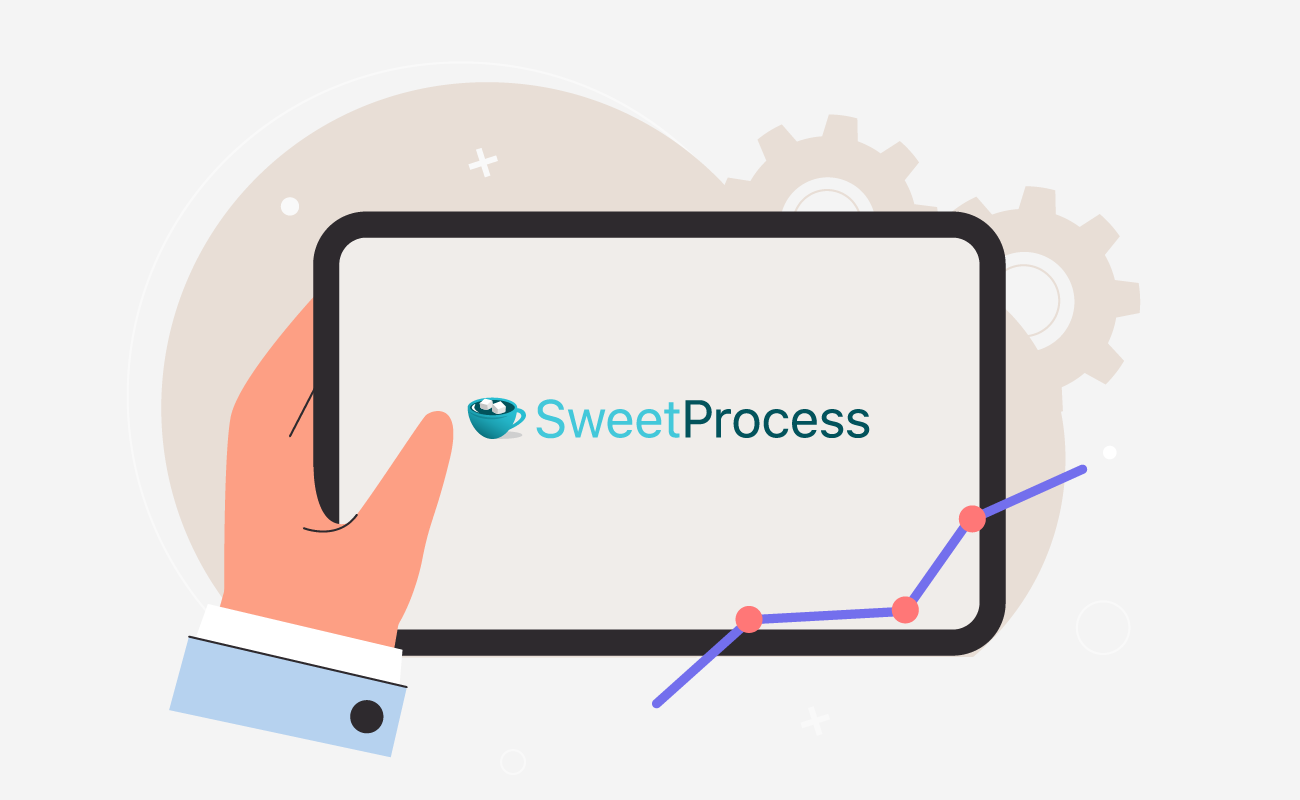
Effective management of knowledge is an indispensable part of your business. SweetProcess emerges as a powerful ally in this process, offering a comprehensive solution to build and manage your company’s knowledge seamlessly.
By leveraging SweetProcess, businesses can streamline processes, document procedures, and foster a culture of knowledge sharing. The platform’s user-friendly interface facilitates the creation of clear, step-by-step guides, ensuring that critical information is easily accessible to every team member. SweetProcess empowers organizations to manage their institutional knowledge, from onboarding processes to daily workflows.
Ready to revolutionize your knowledge management? Sign up for a free trial of SweetProcess today. No credit card is required!

